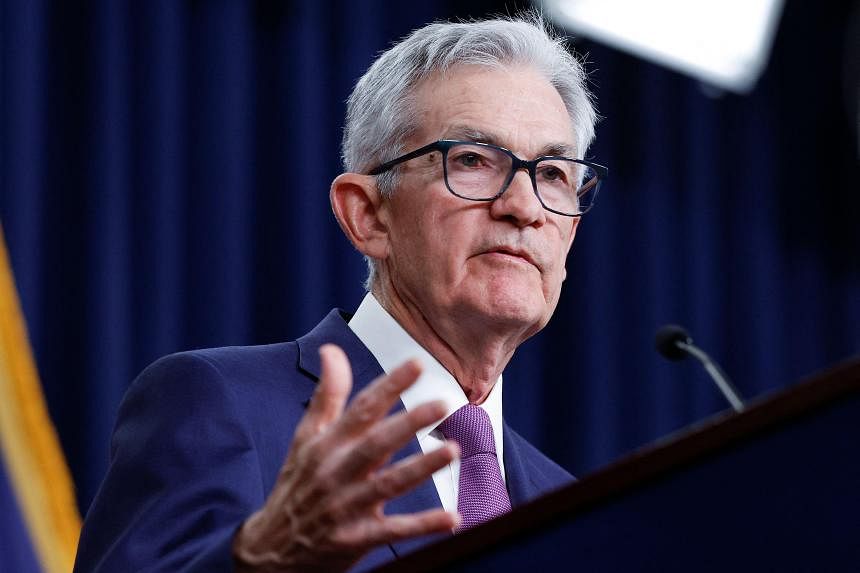WASHINGTON - US Federal Reserve chairman Jerome Powell said on March 6 that continued progress on inflation “is not assured”, though the central bank still expects to reduce its benchmark interest rate later in 2024.
“If the economy evolves broadly as expected, it will likely be appropriate to begin dialling back policy restraint at some point this year,” Mr Powell said in remarks prepared for delivery to the House Financial Services Committee as US lawmakers prepare to face inflation-weary voters in a charged presidential election year.
“But the economic outlook is uncertain, and ongoing progress towards our 2 per cent inflation objective is not assured,” Mr Powell said, noting, as he has of late, both the risk of cutting rates too soon and allowing inflation to re-accelerate, and the risk of keeping monetary policy too tight for too long and damaging an ongoing economic expansion that has sustained a below 4 per cent unemployment rate for two years.
Mr Powell noted that inflation had “eased substantially” since hitting 40-year highs in 2022, but that policymakers still needed “greater confidence” in its continued decline before cutting rates.
Recent data has done little to clarify the direction of the economy and inflation, with some analysts projecting price pressures to steadily ease, others anticipating inflation will persist, and investors expecting rate cuts to start in June – a key decision that will shape the economic landscape during an electoral rematch between incumbent President Joe Biden, a Democrat, and former Republican president Donald Trump.
The House hearing was scheduled to begin at 10am, with a follow-on hearing before the Senate Banking Committee on March 7.
Mr Powell’s testimony comes at a time when inflation is now by some measures within striking distance of the Fed’s 2 per cent target, but also as the economy remains unexpectedly strong.
Even as the Fed has held its policy rate steady since July at 5.25 per cent to 5.5 per cent, the highest in more than 20 years, overall financial conditions have been easing and asset prices rising on expectations of Fed rate cuts, a dynamic that could make inflation harder to tame and bolster arguments for rate cuts to be delayed further than anticipated.
Approaching cuts ‘carefully’
Since the Fed’s Jan 30-31 meeting, data has accumulated in a tit-for-tat fashion: Reports bolstering the soft-landing narrative, such as encouraging figures on services prices on March 5 or signs of slowing consumer spending, have been counterbalanced by others showing inflation stuck in significant ways, such as from still-rising shelter costs, or evidence of unexpected economic strength, such as January’s outsized gain of more than 350,000 jobs.
Still, this week’s hearings will contrast with Mr Powell’s previous congressional appearance in June 2023 when inflation was still double the Fed’s 2 per cent target and policymakers anticipated more rate hikes. What was likely the final rate hike was approved the following month.
Mr Powell has made a point as chairman to cultivate ties with Democratic and Republican lawmakers. That has been aided by his reputation as a centrist with Republican roots who was named a Fed governor by former president Barack Obama, a Democrat, elevated to chairman by former president Trump, a Republican, and given a second four-year term as chairman by President Biden, another Democrat.
While the deep US cultural divide over issues like abortion and immigration may dominate the campaign, the Fed’s decisions could determine whether the presidential vote occurs in an environment of low inflation, low unemployment and falling interest rates that typically favours an incumbent or in more challenging conditions.
Members of a closely divided but Republican-controlled House all face voters in November. While only some members of the Democratic-led Senate panel are up for re-election, those include chairman Sherrod Brown of Ohio, who has already urged Mr Powell to get rate cuts under way, given the decline in inflation.
Since late 2023, Mr Powell has been laying the groundwork for rate cuts to begin, but also has been careful not to commit.
“We have a strong economy. Growth is going on at a solid pace. The labour market is strong: 3.7 per cent unemployment,” Mr Powell said in an interview with the CBS news show 60 Minutes in early February, his most recent public comments on monetary policy. “The prudent thing to do is... to just give it some time and see that the data confirms that inflation is moving down to 2 per cent in a sustainable way... We want to approach that question carefully.” REUTERS

